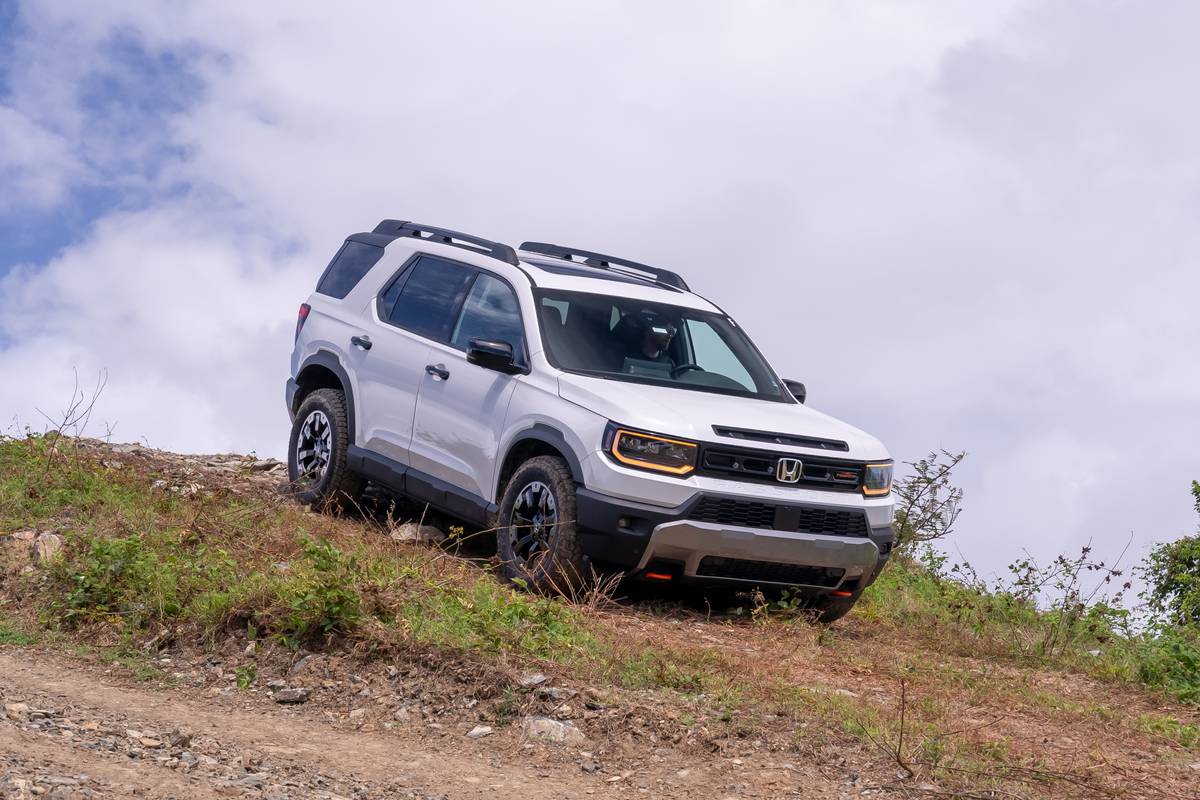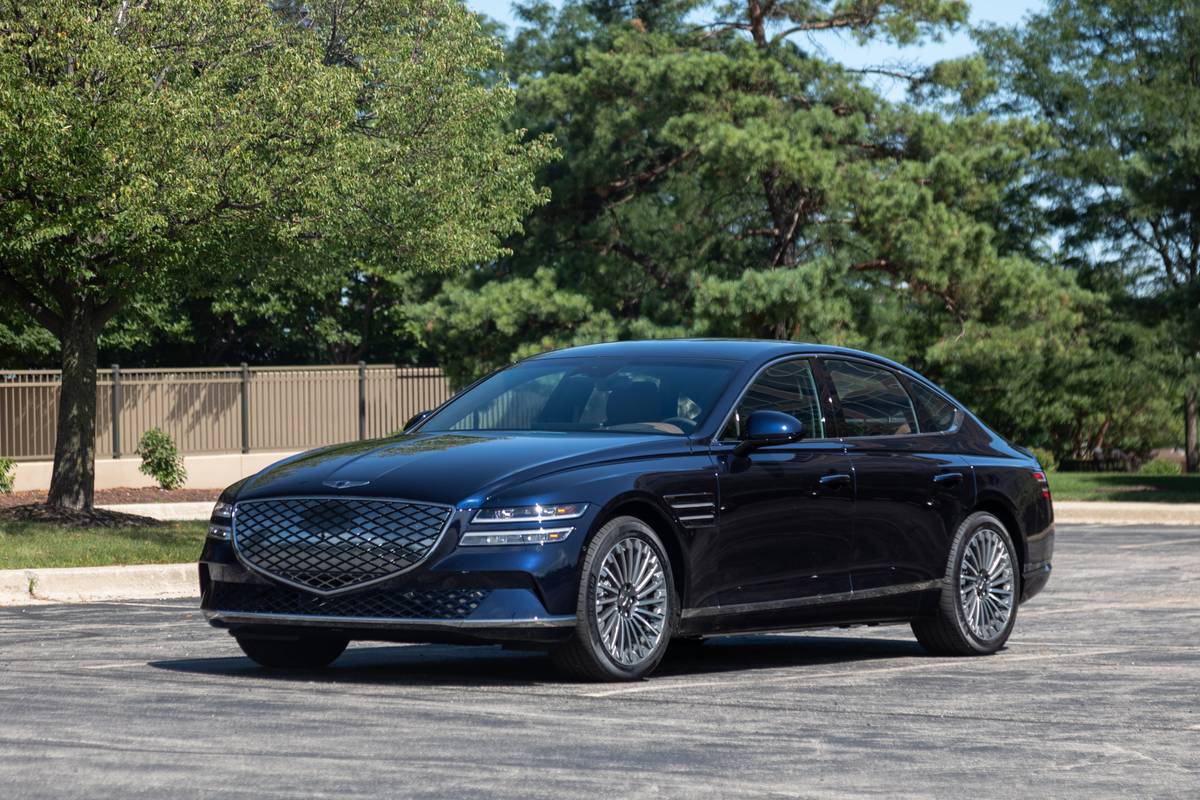Australian First Drive: Ford FPV GS Boss 5.0 315 Ute
On behalf of the Australian people, I’d like to send a big thank-you to America for the Coyote V-8.
The team at Ford Performance Vehicles, the official tuning division of Ford Australia, has just created an awesome Falcon Ute and sedan using the new 5.0-liter engine that’s already in the 2011 Ford Mustang and is going to be fitted to the 2011 F-150.
Well, to be more accurate, FPV used the Coyote engine as a base for a new high-performance supercharged V-8 that produces up to 456 horsepower and 421 pounds-feet of torque using very little boost pressure – just 7psi.
This is more than a dealer-installed supercharger kit, such as the Whipple blower and Roush intake setup bolted onto an otherwise standard eight-cylinder gas engine. The development of this engine alone cost FPV $32 million. It has a full range of upgraded parts and custom high-performance components, and it comes with the same warranty backing as any other factory Ford product.
Even better is the fact that this engine, called the Boss in Australia, has been put through all the internal testing hoops, which means it can easily be sold anywhere in the Ford world. FPV says it is about to start lobbying Ford Motor Co. in the U.S. to see if it wants to use the same engine in some of its cars and pickups.
I’d start crossing my fingers if I were in America because this engine is an absolute beauty. How do we know? We’ve driven it.
There are two versions of the supercharged 5.0 in Australia, each with different calibrations. The base engine makes 428 hp and 402 pounds-feet of torque. It’s used for both the GS sedan and Ute. The 456-hp version is currently available only in the GT sedan.
FPV engineers told me that the higher-spec engine produces so much torque at such low revs that it’s still having trouble getting the power down in the Ute, which uses a leaf spring rear suspension. Even so, FPV hasn’t ruled out releasing a higher-output Ute in the future.
After testing the GS Ute on roads near Melbourne in southern Australia, I’m pretty confident it doesn’t need any more grunt.
You get a pretty good idea the GS Ute means business when you first lay eyes on it. It hasn’t changed all that much from the now-discontinued XR8 Ute, which ran the old 5.4-liter quad-cam Boss V-8 that was unique to FPV. That engine wouldn’t fit under a regular hood, so Ford had to stamp a special cowl with a power bulge, which also gave the car a “don’t mess with me” look.
The Ute sits on 19-inch alloy wheels with super-low-profile tires (P245/35Rx19) and is identified by its loud GS graphics that hark back to the model of the same name in the 1970s. It’s based on the Falcon sedan, but with a longer wheelbase. It runs a double wishbone independent front suspension and leaf springs at the rear and uses mono-tube dampers at both ends.
It can tow up to 3,527 pounds, but the cargo capacity has been reduced to 1,190 pounds.
Turning the key in the GS doesn’t actually make it start; you also have to press the Engine Start button. The V-8 fires up and settles down to a relatively smooth idle. There is a bit of a hot-cam wobble, but the idle is relatively smooth. You get a good idea that this is something special when you dab the throttle and hear the supercharger spin up.
I drove a manual version of the GS with a Tremec six-speed shifter that has been rejigged with a new clutch. The last one was hard work in city traffic, but this is much lighter and easier on the calf.
There is also an optional six-speed ZF automatic, which has been used for Jaguar, Land Rover, BMW and Maserati. It isn’t a dual-clutch special; it has a regular torque converter but can shift quickly, and the best sprint times are achieved with this and not the manual.
I ease on some throttle and release the clutch, and we are away. The torque delivery is fast and brutal. Maximum torque is unleashed from 2,000 rpm all the way through to 5,500 rpm. It is breathtakingly quick. The official stopwatch says it does zero to 62 mph (0-100km/h) in 5.2 seconds.
When we drove, it had rained earlier in the day and the road was still a little greasy, so it was hard work getting the power onto the blacktop.
I’m glad traction and stability control is standard, and FPV has tuned it so the system doesn’t kill the power too often. It comes on only when it needs to. If you’re in the right place and in the mood for some fun, you can switch off the system completely.
The engine’s note is a beautiful combination of supercharger whine and exhaust howl. FPV went to great lengths to keep the supercharger relatively quiet so it doesn’t dominate the experience. It sounds more like a supercharged V-8 from Jaguar than a muscle car. There is aggression, but it is restrained.
FPV can tune the exhaust with an electronically controlled valve that makes the note louder at certain revs and when a certain amount of load is applied. It has also tuned the engine to crackle and pop when you back off the accelerator, especially at low speeds. It is so pleasing to the ear that you find yourself backing off just to hear it.
The best place to listen to the GS Ute is actually from outside. From there, it sounds glorious when someone gets stuck and accelerates hard. You can still hear the hard edge of the supercharger, but the exhaust is far louder, thunderous really. I’m just hoping my next-door neighbor gets one so I can wake up to that every morning instead of his V-6 Commodore (Pontiac G8).
The 5.0 engine is remarkably smooth and spins up very quickly. You could drive it around grandma if you feel like it, selecting a higher gear and just letting the engine do the work.
The problem is that the midrange acceleration is just so strong and addictive that you just want to wind it out all the way to 6,000 rpm. This is an issue unless you have access to a track because we have strict speeding laws in Australia, and police can even impound your vehicle if you’re caught going too fast.
One of the advantages of the new V-8 is the reduced weight at the front of the car. Even with the supercharger on top, the new Boss 5.0 engine is 103 pounds lighter than the old engine – largely because the new engine is smaller, and the block is aluminum rather than cast iron.
This doesn’t sound like a lot, but it does help the GS Ute turn-in better. The last V-8 Ute used to be a bit clumsy in the bends compared with the lighter turbocharged six-cylinder, but they now feel similar.
Ford and FPV have done a great job with the chassis, and the GS Ute handles almost as well as the sedan. The only time it struggles is over midcorner bumps, which unsettle the leaf springs.
We didn’t carry anything in the cargo box of the GS Ute on the launch. It’s not really the kind of car you’d use to lug much stuff around, and any dog would certainly have to hang on tight.
I know a few builders with the previous-generation XR8 Ute, and they like it but have trouble with the lack of ground clearance. Those who need a serious workhorse should buy the six-cylinder one-ton Falcon Ute or bigger utes like the Ford Ranger or Toyota Hilux.
The GS is really a two-door sports car with a really big trunk. It can be used to carry some work items and hobby gear like dirt bikes, but its main appeal is its incredible performance.
Even running the milder 428-hp tune, the new supercharged Boss is a simply stunning engine, and it transforms the GS Ute.
Australians are happy enough to keep it to ourselves, but it’s bewildering that Ford doesn’t want to sell this in the U.S. I reckon you’d like it a lot.

Featured stories

This or That: 2026 Honda Passport TrailSport Elite Vs. 2025 Toyota 4Runner TRD Off-Road Premium


2025 Porsche Panamera GTS Review: Continental Cruiser

